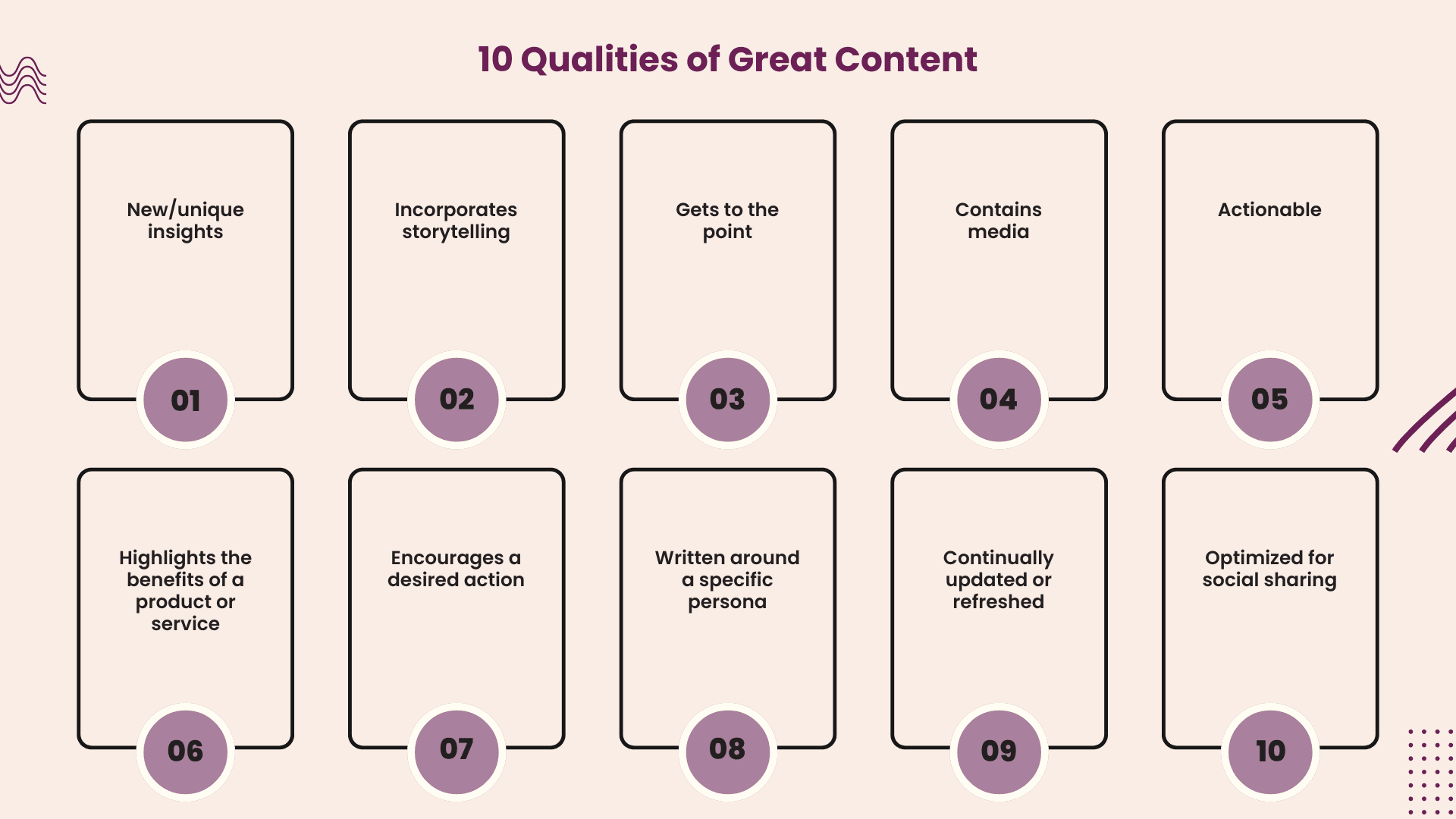No products in the cart
How to write SEO Friendly Blog Posts

How to write SEO Friendly Blog Posts: Latest Trends & Tips on Writing Blog Posts That Will Rank Well on Google
What are the new rules of blog content marketing & where should your e-commerce business focus?
Whether you like it or not, nothing ever stays the same in e-commerce. As an online business, if you want to stay visible and prevent your sales from drying up, you can’t afford to ignore the ever evolving changes in search engine algorithms. Honestly, this painful truth is what keeps me busy as an SEO specialist for fashion e-commerce brands.
You never have enough time or resources to do it all. So the question is: What should you focus on in order to make the most IMPACT with your blog content? And by impact, I’m talking about boosting visibility, conversions, engagements, and sharing amongst your target audience.
If you want to know how to write SEO friendly blog posts in a way that’s informed by the most recent trends in human and search engine behavior—this article is for you!
In this article you’ll learn:
- How Google Search Engine rewards original and relevant content
- Why long-form content is still good for SEO despite shrinking human attention spans
- How to keep your audience engaged by writing blogs for humans—not machines
How Google Search Engine rewards original and relevant content
Not sure if you’ve heard, but Google is cracking down even harder on unhelpful content!
On March 5th, 2024, Google announced new changes in their efforts to provide search engine users with websites that are more useful and relevant while removing unhelpful or spammy websites.
Here are the two key changes explained on their webpage:

Source: https://blog.google/products/search/google-search-update-march-2024/
As a result of these current and previous updates, Google expects to “reduce low-quality, unoriginal content in search results by 40%.”
Google is updating their spam policies to better address the following issues:
- Scaled content abuse: Sites that generate large volumes of low-quality, unoriginal content aimed at influencing search engine rankings.
- Site reputation abuse: Sites with strong reputation hosting third party low-quality content.
- Expired domain abuse: Sites where the domain was expired but has now been bought and repurposed in order to boost ranking of low-quality content.
Is this good news or bad news for your web pages? That depends. If up to this point, you’ve been churning out generic, low-quality blogs for the sake of capturing keywords (versus providing engaging, helpful information to human readers)—you should be worried. Your low-quality web pages could be considered spam by Google, resulting in a removal from their index.
But if you have been creating original, useful, and engaging content, this update is good news for you because your web pages could potentially see a rise in their positions on search engine results—which means greater visibility and higher potential for clicks.
Later in this article, I’ll tell you about the current best practices for blog writing that will help keep your audience engaged. But right now, let’s move on to explore the next big issue surrounding the topic of SEO and blog content—shrinking human attention spans and implications on long-form content.
Why long-form content is still good for SEO despite shrinking human attention spans
The goldfish are winning.
Did you know that compared to modern humans, goldfish have longer average attention spans? Goldfish attention spans average 9 seconds while current human attention spans average 8 seconds.
Why is this happening? Here are a couple theories:
- Too much information: With vast amounts of information being fed to us on a minute to minute basis (emails, text messages, videos, search results, social media), our brains are finding it harder and harder to stay focused on one thing for a long period of time
- Tiktokification: People who binge-watch short-form content such as TikTok struggle “to participate in activities that don’t offer instant gratification”. (Source: The Wall Street Journal)
Human attention spans are shrinking, yet I’m saying that long-form content (1000+ words) is still good for SEO. Sounds like a paradox, doesn’t it?
As much as our attention spans are shrinking, our brains continue to starve for useful, resonant, and original content that we can’t find anywhere else.
Benefits of long-form blogs:
- They get more traffic, more backlinks, and more social shares and engagement because there’s substance for people to think and talk about.
- Helps to demonstrate the author’s expertise and build trust between the reader and the brand.
- You can incorporate words and phrases from your SEO keyword research more naturally, while delivering value to your audience.
Here’s a general rule of thumb on word count in light of our current situation:
If you’re able to craft a blog article in fewer words but still able to fully present your ideas, facts and stories in an engaging way—go for it. BUT if you write a piece of content that’s longer such as 5000 words, AND it’s a home run on delivering content that keeps your audience reading and soaking it in, one paragraph to the next—that’s great too!
Google Search Engine rewards high-quality, useful content by ranking those pages higher—even if it’s on the longer word count side.
How to keep your audience engaged by writing blogs for humans—not machines
Okay, so with such a huge volume of stuff (and fluff) being fed to people online, how can you create long-form content that will cut through the noise?
Here are 3 tips on how to write blogs that will grab your target audience’s attention and rank higher on Google.
Tip 1: Focus on delivering value to your target audience
What’s in it for your reader when they read your blog?
If you can’t answer that question, don’t even bother writing. You have to get clear on the value you’re creating for your reader. Otherwise, they’re not going to pay attention to you, and neither will Google!
Google is becoming more “human” in its approach to crawling web content—examining context and value to readers and using Natural Language Processing (e.g. adapting to how humans would naturally type queries into search boxes).
In order to create content that delivers value to your audience, ask:
- What questions do my target customers have?
- What information or types of stories are they looking for?
Write about those things, and make it interesting!
Did you know that 8% of the 8.5 billion searches on Google each day are questions?
If you’re wondering what popular questions people are asking in relation to your product or service, check out forums like Reddit and Quora to get content ideas.
Tip 2: Choose SEO-friendly content types and formats
Help the bots help you. Here are a few types of content that tend to get higher rankings and more engagement:
- Listicles and How-to Guides: Straightforward, actionable advice or steps to help readers achieve their goals.
- Storytelling and Personal Stories: Personal experiences and emotional elements that readers can relate to.
- In-depth Reviews and Comparisons: Detailed reviews and comparisons that help readers make informed decisions.
- Thought Leadership and Expert Insights: New perspectives or deep dives into specific topics that establish the brand as an authority.
Formatting tips to help Google connect search engine users to your web pages:
Optimize your headings:
- Write your H2 headings as questions that your target audience would naturally type in their search box. E.g. “What is the difference between gold plated and gold filled jewelry?” “How to measure inseam for custom pants?”
Optimize your title tag and meta description:
- Include your focus keyword in your title tag and meta description
Tip 3: Treat your reader the way you want to be treated—like a human
Unfortunately, common sense isn’t that common, so let’s make this clear:
Your customers are human beings. The people researching your products, connecting with your brand and making purchasing decisions are—PEOPLE.
So write your content for humans, NOT machines.
Remember that Google favors original content, insightful data, and personal experience because that’s what humans connect with.
So here’s the problem with relying on AI—it’s creating off of what’s available online, so the results are generic. AI written content is faster to create, but they tend to get less engagement and lower rankings on Google.
You understand your customers and can speak to them in your brand voice better than the machines. So as a human, use your knowledge and creativity to write content that will empathize and relate with your customers.
You get what you put in, so focus on quality over quantity. It might take you longer, but your work will pay off.
Here are 3 key elements that every seo-friendly blog should have:
1. Depth: Google ranks sites according to E-E-A-T, which stands for: Experience, Expertise, Authoritativeness and Trustworthiness.
2. Easy to read: Easy to understand, well-organized and gets to the point without being boring.
Note for the AI users: Please don’t waste your reader’s time. AI written blogs often sound generic and repetitive, so if you use AI, take the time to edit your work. Experiment with different commands to get better results. Tighten it up and put your brand’s unique spin on it.
3. Target Keyword: Choose one focus keyword to target and use in your title tags, meta description, headings and paragraphs (can also be a “long-tail” keyword that is a phrase).
Checklist for Writing High-Quality SEO-Friendly Blog Posts
When you’re ready to work on your next blog article, keep this handy checklist nearby to remember all the important elements to include in your blog.

Conclusion
Now that you know about the latest forces that impact how blog posts rank on search engine results, it's your turn to start writing. Boost visibility, drive conversions and improve engagement between your target audience and your brand by giving today's tips a try!
If you ever catch yourself feeling disoriented in the research and writing process, stick to these three big picture takeaways to keep you grounded in writing your SEO friendly blog:
- Deliver Value and Quality over Quantity
- Write for Humans
- Optimize for Keywords
Additional Resources for creating your blog
Check out these additional resources from my website to help you craft well-optimized blogs that humans will actually want to read:
Benefits of Blogging for Business: Blog Writing Tips to Help Your Brand Stand Out
How To Create a Blog Content Strategy for Effective Content Marketing
How to Increase Blog Traffic with Internal Linking for SEO
Still feeling the pain?
Let us do it—keyword research and blog writing services
If you’re an e-commerce business owner who’s thinking, “This all makes sense. I want to produce more impactful blogs, but I don’t have time to work on them,” reach out to me!
Let’s discuss how my team and I can help you produce high-quality content in the most pain-free way possible! We are experts in helping businesses plan, research and create blogs that will drive more traffic and engagement. Book a call with an SEO Specialist today!
